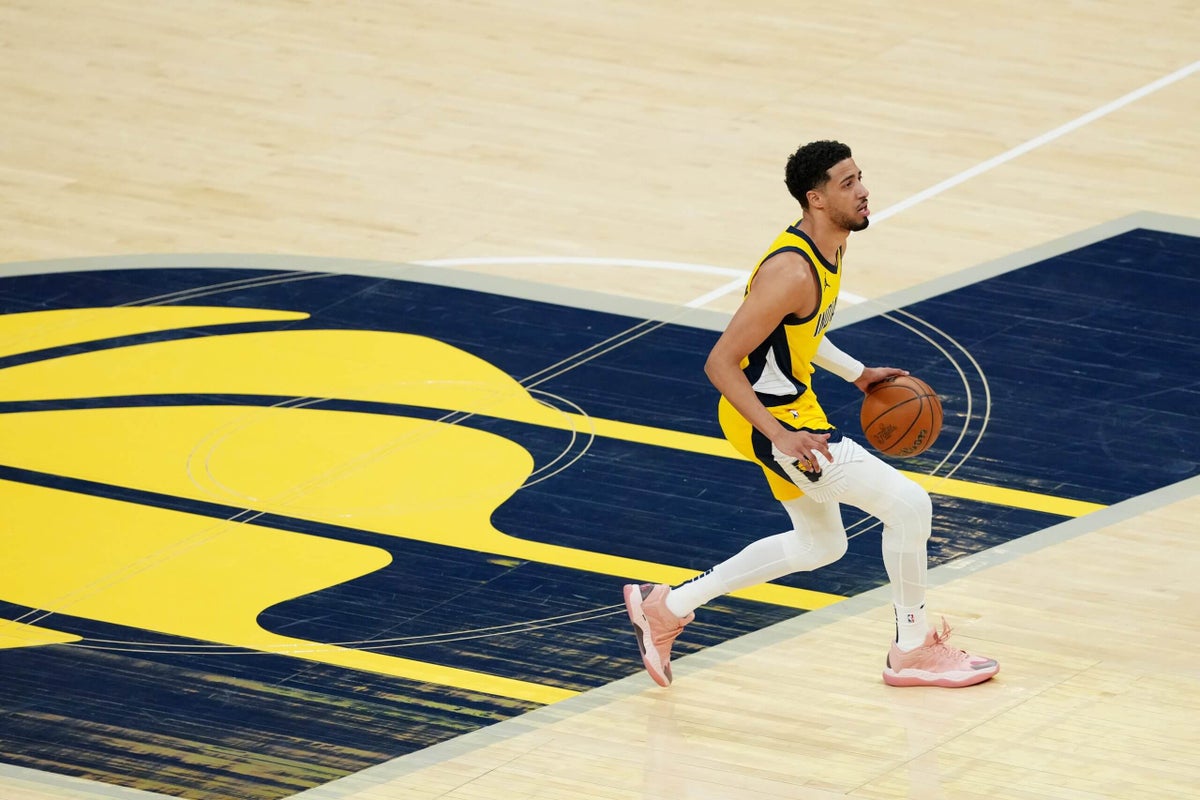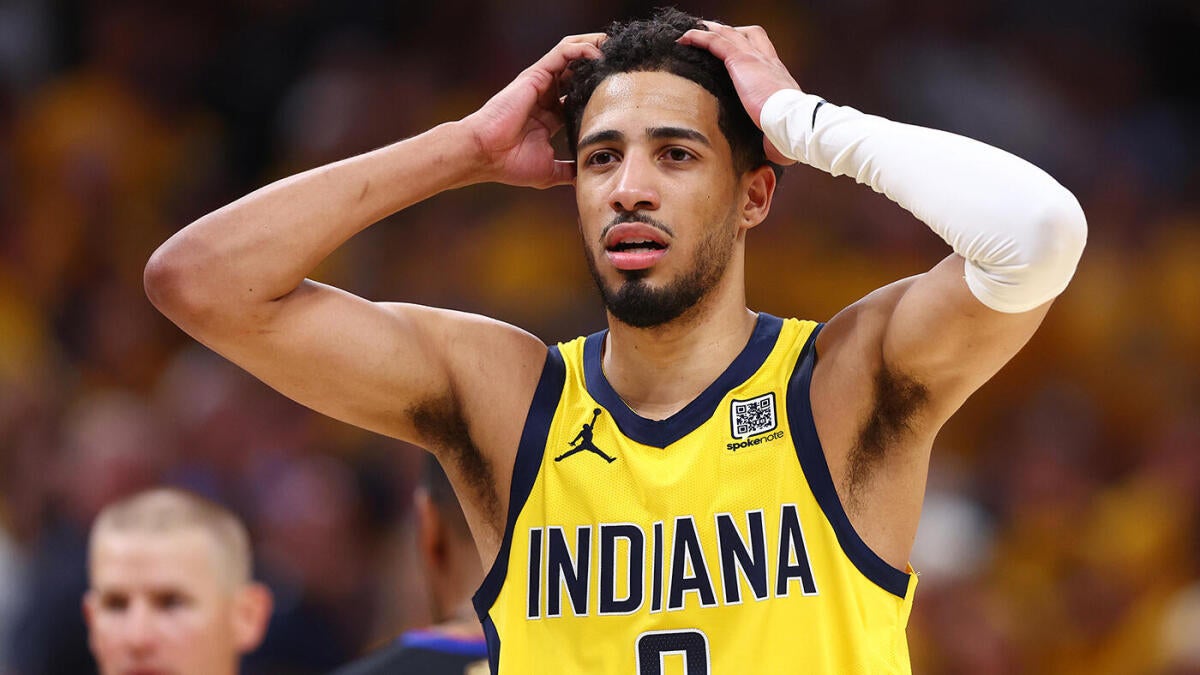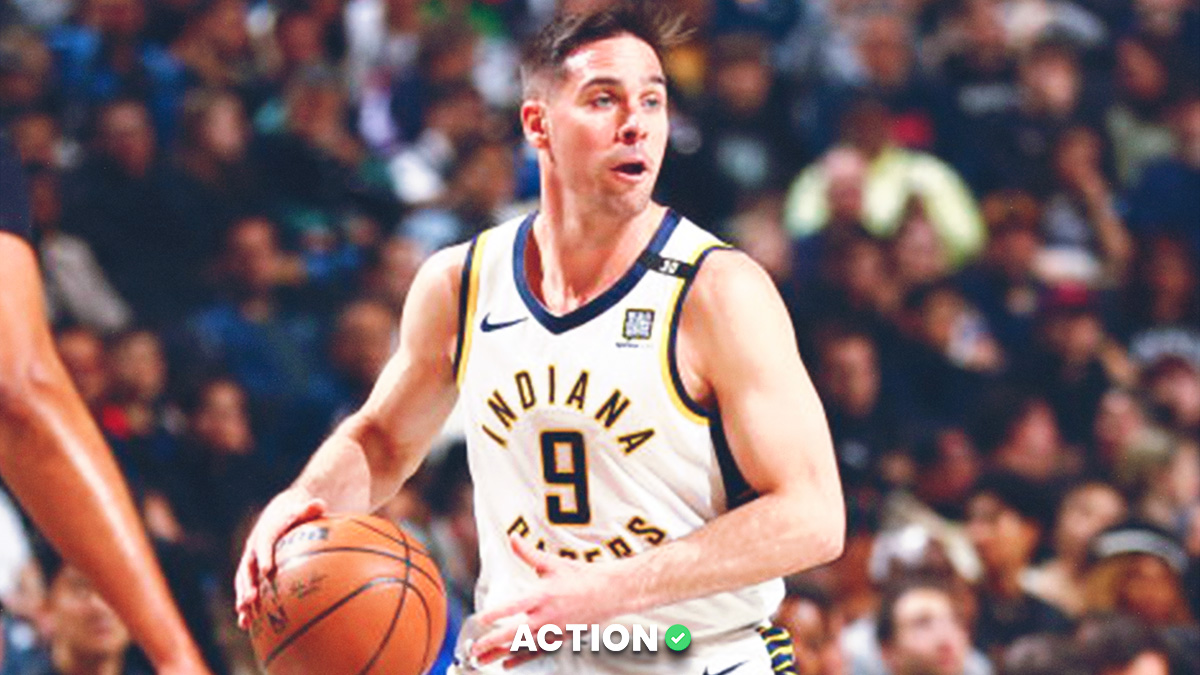
An All-Star’s energy has returned. Rebounders are causing mismatches. And a notorious pest is winning with skill.
Let’s open up the notebook to run through three trends that have caught my eye during the NBA Finals:
Aggressive non-shooting
Cason Wallace could not fend off Tyrese Haliburton.
In a tied Game 3 with just under seven minutes to go, Haliburton leapt from behind Wallace for a rebound, possibly getting away with a gentle shiver to the back. The All-Star point guard jumped with one hand high and batted a loose rebound to his center, Myles Turner, who initiated the fast break.
Advertisement
For the previous 72 hours, public conversation had swirled around the aggressiveness (or lack thereof) of Haliburton, who underwhelmed during his first two NBA Finals performances, save for his buzzer-beating theatrics in Game 1. Other than on that victory-icing jumper, Haliburton wasn’t attacking like his All-NBA reputation implied he should have.
He remedied the problem in Game 3, when he went for 22 points, nine rebounds and 11 assists, leading the Pacers to a 2-1 series lead and showing that assertiveness isn’t just about initiating offense or looking for his own shot.
Haliburton is at his best when he wreaks havoc in ways other than scoring, like on the tipped rebound to Turner. As The Athletic’s Eric Nehm wrote earlier in the playoffs, at times, his rebounding can turbocharge Indiana’s already potent offense. The Pacers can grab the ball and go.
In fact, Haliburton snagging a rebound nearly guarantees the Pacers buckets. Most of the time, it leads to him corralling the ball and racing the other way. On this play, Haliburton slapped the basketball to Turner, who kicked it to Andrew Nembhard, another point guard to push the break, as the Pacers love to do. Nembhard sprinted up court and pitched the ball back to Turner, who relayed it to Haliburton. Haliburton went right, then stepped back into a 3-pointer, which gave the Pacers a lead.
All these actions occur over only eight seconds.
During its 19 playoff games, Indiana is scoring a remarkable 160.8 points per 100 possessions on plays that follow Haliburton defensive rebounds (excluding free-throw rebounds), according to Second Spectrum. For perspective, that’s the mathematical equivalent of an 80 percent free-throw shooter going to the line for two freebies.
The Pacers move fast, especially when Haliburton is decisive with more than just his shot.
Advertisement
He attempted only four more field goals in Game 3 than he did in each of Games 1 and 2, but he sprayed passes to teammates with a different verve. The Pacers took 30 shots off dishes from him, Haliburton’s second-highest total of the playoffs, topped only by his unforgettable Game 4 during the Eastern Conference Finals, when he went for 32 points, 12 boards and 15 assists to go with no turnovers.
The Pacers go as Haliburton does. When his energy consumes each facet of the game, so does Indiana’s.
Speeding for rebounds
The Pacers’ speed affects elements beyond the obvious.
Sure, Haliburton can fly from end to end after grabbing rebounds. He can kick the ball ahead for layups. Pascal Siakam leaks out on the break like few other forwards can, as does Obi Toppin. The Pacers rushing up the court can force mismatches on the other end, which the team can exploit in the halfcourt. A big man may have to pick up Haliburton or Nembhard, which opens up scramble mode for Indiana’s offense.
But the residuals from the Pacers’ patented style don’t end there.
In Game 3, Toppin soared for a key rebound that was available only because of his team’s relentlessness.
This play with four-and-a-half minutes to go in the final period starts with a clanked 3-pointer from Lu Dort and ends in a putback slam from Toppin. But watch what happens between.
Toppin grabs the defensive rebound and outlets to Haliburton with haste. The ball is across the halfcourt line expiditiously with 21 seconds remaining on the shot clock. Immediately, Haliburton goes onto a pick-and-roll, which means the Thunder’s defenders have to pick up anyone who is closest.
That leaves the 6-foot-5 Alex Caruso on Toppin.
This is not the world’s worst mismatch — or even a mismatch at all. A feistier defensive guard than Caruso does not exist on this planet. The Thunder use him to man bigger players all the time. In fact, Toppin was his primary assignment during stretches of the first half of this game. But the plan in this lineup wasn’t for Caruso to take the taller Toppin, who was matching up with forwards like Dort and Jalen Williams down the stretch.
Watch what happens once Haliburton takes off for the basket, giving the Thunder little time to react.
Dort dashes all the way from the corner to help on the drive. Caruso gets caught watching the ball. Toppin, who rarely fails to notice when his man takes an eye off him, darts to the hoop before Haliburton even goes up for a shot. By the time Haliburton’s floater bangs off the rim, Caruso is out of rebounding position. He’s not big enough to make up for it with Toppin already in the air for the putback.
Advertisement
The Pacers are out-pacing the rest of the league in the subtlest of ways.
T.J.’s Js
Only one NBA player boasts the energy of a four-year-old, the jump shooting form to match and can still take over games. T.J. McConnell had his NBA Finals moment in a way that only he could: Stealing two inbounds passes in Game 3 and, on brand, rising for jumpers that could have been floaters or layups for anyone else.
McConnell spurred the Pacers on a run at the end of Game 3’s first half, injecting frantic pace, dishing out assists and scoring in his favorite way.
At the end of the second quarter, he pitter-pattered past Isaiah Joe and into the paint only to bend his knees as if he were doing a squat and launching upward. Most people project themselves into the air with so much verve only for full-court shots. McConnell does it for seven-footers. On his best days, he looks like a toddler using every muscle to use just to reach the 10-foot-tall rim.
When most other NBA players would try a floater, a teardrop, even a layup, McConnell is hammer throwing six-footers through the hoop.
But like after he scampered past Joe, the ball goes in. A lot.
Of the 140 players who attempted at least 40 pull-up jump shots this season, no one averaged a shorter distance on his pull-up jumpers than McConnell did, according to Second Spectrum. The trend has continued into the postseason, when he rarely misses. He’s risen for 34 pull-up jumpers in the playoffs, and he’s drained 20 of them.
No one claws for buckets quite like McConnell, as the Thunder are now witnessing firsthand.
(Photo of Tyrese Haliburton: Dylan Buell/Getty Images)



